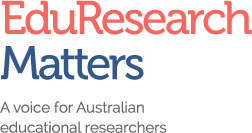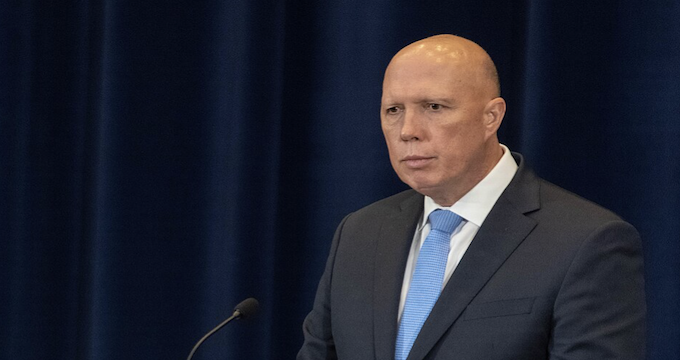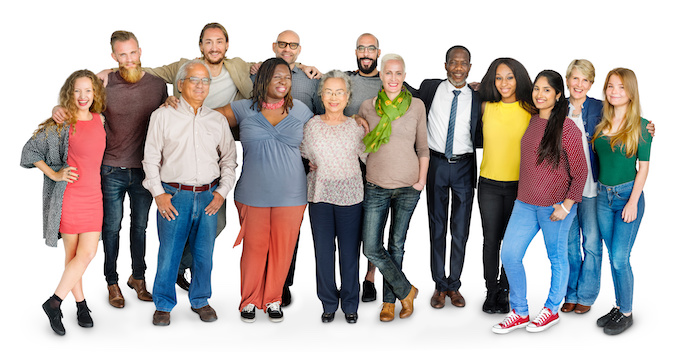When asked last week what he would do about the “the woke agenda” in education, federal opposition leader Peter Dutton raised the prospect of tying government funding to teaching of the curriculum. He said: “Kids… should not be guided into some sort of an agenda that’s come out of universities”.
No details were offered as to what exactly this woke agenda is. Nor could anyone point to specific examples of what is currently being taught in Australian schools or universities that shouldn’t.
Dutton is copying Donald Trump. “DEI” has been branded as “woke” by Trump’s MAGA movement.
As citizens of a sovereign country, Australians might not pay all that much attention to what the president of another country says and does. But those politics are rearing their ugly heads here. It is time to pay attention.
Importation of Trumpian ideals, such as his war on ‘woke DEI policies’, threatens our way of life, one that has long been underpinned by the idea of a ‘fair go’ for all.
This is the essence of the trick being played. DEI is an acronym for diversity, equity, and inclusion. Turning these words into an acronym and dismissing them as ‘woke’ is a way of disguising what these groups are really against. They are against diversity, equity, and inclusion.
Let me say that again. They are against diversity, equity, and inclusion.
So, what are diversity, equity, and inclusion? Is the derisive branding deserved? Are they “an agenda that’s come out of universities”?
Um, no. But these concepts do inform our teaching and it’s critical that they do. We will start with diversity and why it’s important to be aware of it.
Diversity
Recognising that people are not all the same and that we experience the world differently is not just common sense. It’s a necessity for good public policy decision-making. Let’s take what happened in Melbourne during COVID as an example.
Early in the COVID-19 pandemic, nine Melbourne public housing towers were placed in hard lockdown with no warning. Bewildered residents were met by police who began locking entrances at the foot of the towers as the Victorian premier announced the lockdown via a televised press conference broadcast. In English.
Many of the more than 3000 tower residents fled wars in their home countries. They were frightened because they could not understand what was being said. They did not, therefore, know what was going on. Imagine how they felt.
The whole situation could have been averted if those in charge of the emergency response had thought ahead about the need to communicate the need for the lockdown in a range of languages.
Looks like there were no bilingual people on that team, hey?
This is just one public policy fail due to lack of recognition that people are different and need different things. There are more. What about the Queensland government’s purchase of 75 new trains that did not meet disability access standards?
The lack of accessibility inconveniences people with a disability. It prevents them from getting to work or moving about freely as others do. But it also means the government must now spend even more to retrofit the trains.
Being aware of diversity, realising not everyone experiences the world the same way you do, and factoring it into decision-making is smart. It’s not ‘woke’. So is paying attention to equity.
Equity
The concept of equity is over 2000 years old, yet it is commonly misunderstood. It’s misunderstood – even by politicians, who really should know better, given our modern system of taxation is informed by the principle of distributive justice.
In a nutshell, equity is about fairness. The aim of equity policies is to reduce impacts of inequalities arising from circumstances individuals have no hand in choosing. This is what is meant by Aristotle’smaxim “Treat equals equally and unequals unequally”.
Right-wing commentators in the US and Australia have dismissed equity as ‘Cultural Marxism’ but they are wrong. It would be more accurate to describe them as Rawlsian, after Nobel Prize winning political philosopher John Rawls (1921-2002). His Theory of Justice articulates a range of principles aimed at resolving the tension between liberty (or freedom) and equality.
Veil of ignorance
One of Rawls’s thought experiments asked us to imagine that we do not know our place in society, nor our abilities or talents. We are behind a ‘veil of ignorance‘. From this position, we are asked to design the rules and structures of society.
When faced with making a decision without knowing our own position in society, Rawls reckoned we would each want to ensure that the least advantaged members of society are cared for because we might be among them.
You can test this by getting two kids to divide a Mars Bar. The rule is that one divides it, and the other chooses from the results. Nine times out of 10 the divider will try to get the two halves as equal as possible because they don’t want to end up with the smaller bit. Smart, not woke.
In today’s world, Rawls might be described as a “latte-sipping leftie“, but he wasn’t and nor is the concept of equity. Extreme inequality is not a good thing. It dampens productivity, leads to revolutions, and is best avoided through mechanisms that enable a more even playing field. Mechanisms like inclusive education.
Inclusion
Within two months of Trump taking office, a teacher in Idaho was instructed by her school administration to remove a poster on her classroom wall because it was “an opinion” with which not everyone agrees.
The poster, which this brave teacher has since put back on her classroom wall, features images of children’s hands of varying skin tones with the statement, ‘Everyone is welcome here’.
Welcoming, respecting, and valuing diversity is a key principle of inclusion, an approach to education that seeks to remove barriers to access and participation with the aim of producing fairer (more equitable) outcomes for all.
While some right-wing commentators dismiss this as social engineering, greater equity in educational outcomes is good for everyone. Even those motivated purely by self-interest should be a fan of inclusion because more kids doing better at school means fewer unemployed adults on Jobseeker.
Removing barriers to access and participation is not “dumbing down” or “lowering standards”. It means getting rid of the things that get in the way so that everyone can achieve to their fullest potential.
That doesn’t mean that everyone gets an A or that everyone passes. It means that impediments that may prevent an individual from passing are no longer a factor in their achievement.
We’ve recently demonstrated that this approach benefits all students: those with a disability and those without. Why would anyone be against that?
Is any of this taught in universities?
Yes. Because Australia has laws against discrimination and university graduates must abide by them when they enter the workplace.
As future architects, journalists, managers, doctors, teachers, nurses, and more (including politicians and political staffers), university graduates will one day make decisions that have the potential to impact other people.
Do we really want government procurement officers to continue purchasing trains that don’t meet accessibility standards?
And do we want government staffers to continue organising press conferences that exclude the very people at the centre of the crisis?
Do we want university graduates to find themselves in trouble with their employer’s Human Resources department because they have crossed the line in their interactions with others?
Ignorance of diversity, equity, and inclusion leave our institutions in danger of perpetuating unconscious bias and discriminating on the basis of race, gender, disability and other attributes that are protected by law.
Universities didn’t create those laws. Politicians did in response to public demand. And because history has demonstrated what happens in the absence of such laws.
Valuing diversity, aiming for equity, and being inclusive isn’t woke. It’s how mature liberal democracies survive, avoiding revolution through a social contract that prevents the depth of inequity that has upended so many nations over time.
We are now witnessing the wanton destruction of that social contract in the United States. Only someone who didn’t pay attention in their high school history class would invite that to Australia.

Linda J. Graham is director of the Centre for Inclusive Education and a professor in the School of Education at Queensland University of Technology (QUT). She is the editor of the best-selling book, Inclusive Education for the 21st Century: Theory, Policy and Practice, and is lead chief investigator of the award-winning Accessible Assessment ARC Linkage Project.
The header image of Peter Dutton, taken in 2021, is from Wikimedia Commons and used under this licence.







